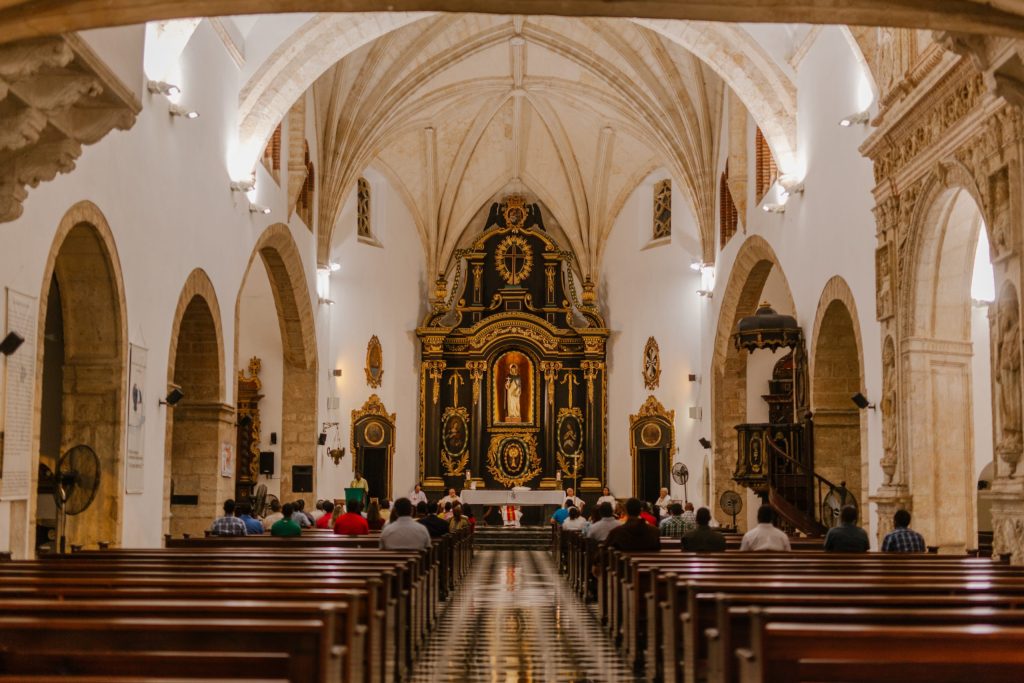
Five new structures throughout the United States, such as the Founders Church of Religious Science in Los Angeles, will be funded by the Conserving Black Modernism initiative, a grant program aimed at protecting historic modern buildings designed by Black architects and designers, officials stated on Tuesday.
The statement was released by the Getty Foundation along with the African American Cultural Heritage Action Fund of the National Trust for Historic Preservation. According to the organization, Getty’s financial support will aid in creating preservation strategies for the structures, enhance the expertise of those who maintain them, encourage community involvement, and raise public recognition of the influential Black architects and designers who played a role in the modernist architectural movement.
Every year, the Conserving Black Modernism initiative has increased the number of architects acknowledged through this effort, and we are thrilled to add five new designers whose creative structures have enhanced communities across the country,” said Joan Weinstein, Director of the Getty Foundation. “Collaborating with the National Trust, our aim is to help present a more comprehensive narrative of the pioneering contributions of Black architects to the modern movement, which in turn reshapes the movement itself.
The National Trust’s initiative focused on the African American Cultural Heritage Action Fund is the most extensive effort aimed at ensuring the survival of African American historical locations.
Currently, only two percent of licensed architects in the United States identify as Black,” said Brent Leggs, the fund’s senior vice president. “The Conserving Black Modernism initiative is making sure the historical contributions of Black designers to this profession are recognized and can motivate present and upcoming generations. This year’s group features locations designed by architectural legends, as well as names that the world might be discovering for the first time.
Since it began, 21 structures have been awarded funding via Conserving Black Modernism, such as a City Hall that features Spanish Rancho and Japanese elements, designed by the oldest Black American architecture firm in Los Angeles, a theater in Washington D.C. named for the first Black actor to take on leading roles in Shakespearean productions, and an acclaimed swimming pool and pool house located in Wichita, Kansas.
The recipients of the Conserving Black Modernism grants this year are:
— Founders Church of Religious Science located in Los Angeles. Opened in 1960, the church was created by Paul R. Williams, who was the first African American member of the American Institute of Architects. The modern, oval-shaped structure was influenced by geometric shapes that reflected the teachings of congregation founder Ernest Holmes about completeness, unity, and optimism. The nearly 20,000-square-foot reinforced concrete building includes a large steel-framed dome and a concrete screen, while the interior design notably incorporated closed-circuit television — an emerging technology at the time — which allowed attendees to view and listen to services outside the main auditorium. The location was recognized as a Los Angeles Historic-Cultural Monument in 2002 and was added to the National Register in 2020. An accessibility plan aims to enhance the utilization of this religious landmark and the possibility of creating community engagement areas.
— ITC Administration Building in Atlanta. Georgia’s first licensed Black architect, Edward C. Miller, designed the building at the International Theological Center, a graduate school of theology made up of five primarily Black denominational Christian seminaries. Completed in 1961, it is the oldest structure on the center’s campus and has a modern brick exterior. Funding will be used for a historic structures report, building evaluations, and a reuse study to identify the best future uses for the building, along with more comprehensive historical documentation of Miller’s pioneering career.
— First Church of Deliverance in Chicago. Once a hat factory, the church is an example of an innovative adaptive reuse project featuring an art moderne design that significantly differs from the usual architecture found in religious buildings. In 1939, Walter T. Bailey, the first licensed Black architect in Illinois, redesigned the structure. Its smooth surfaces, flowing lines, terracotta tiles, and glass blocks highlight its streamlined appearance. A Getty grant will assist in creating the first complete preservation plan and campus management strategy for the Chicago landmark, which includes the church building, the Maggie Drummond Community Center and Day Care, and the Children’s Church.
— McKenzie Hall in Eugene, Oregon. The University of Oregon’s McKenzie Hall was conceived in 1968 by DeNorval Unthank Jr., the first African American graduate from the university’s architecture program. Its structure, featuring geometric shapes, brick, and visible concrete, is a prime example of the Brutalist architectural style. A preservation and interpretation plan will guide the building’s future maintenance as a historical asset, facilitate educational activities for the university and surrounding area, and honor Unthank’s impact on the campus design via an informative exhibit.
— Vassar College’s 2500 New Hackensack building located in Poughkeepsie, New York. This structure on Vassar College’s campus was created by Jeh Vincent Johnson and finished in 1963. Johnson is a co-founder of the National Organization of Minority Architects, was part of President Lyndon Johnson’s National Commission on Urban Problems, and led the National Committee on Housing for the American Institute of Architects. The building represents the contributions of Black architects to the modernist style and showcases a minimalist design using brick, steel, and glass. Funding will assist in developing a facilities management and preservation strategy and promote greater connection with Johnson’s legacy at the college.







